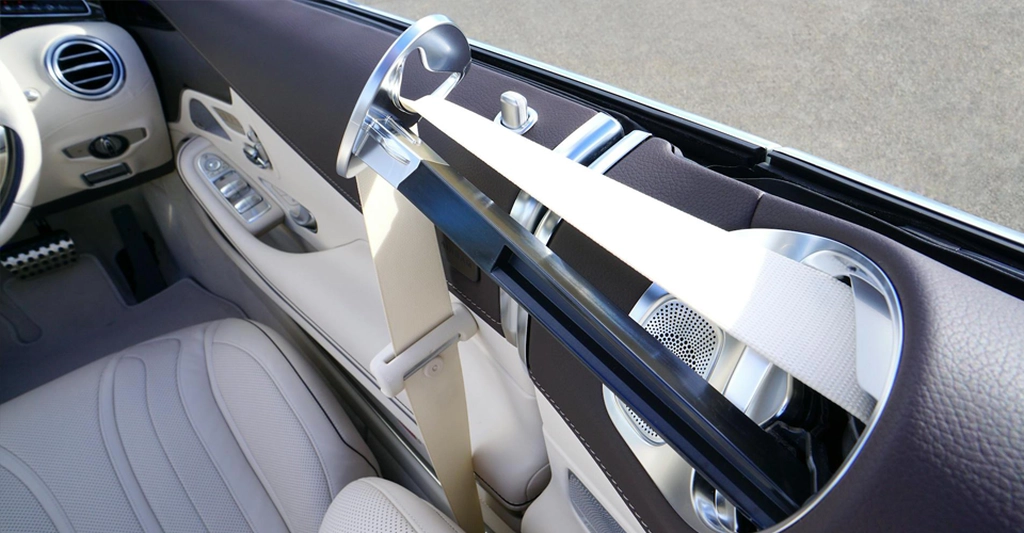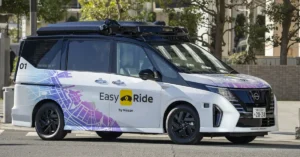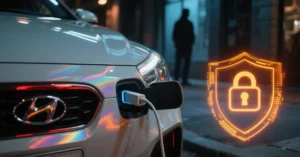Volvo has always been a pioneer when it comes to vehicle safety. After all, this is the brand that introduced the three-point seatbelt way back in 1959 a game-changing invention that’s now standard in nearly every car on the road.
Now, they’re doing it again with a next-gen seatbelt that’s smart, adaptable, and powered by artificial intelligence.
Meet the Multi-Adaptive Safety Belt
Launching in the upcoming Volvo EX60 electric SUV, the multi-adaptive safety belt is no ordinary strap. This intelligent seatbelt system uses real-time data, AI, and a suite of in-car sensors to tailor its response to each passenger and each crash.
The goal? Maximise protection in every possible scenario.
How It Works
Unlike traditional seatbelts that respond the same way to everyone, this smart belt adjusts based on the occupant’s height, weight, body shape, and seating position.
Using cabin sensors and AI, the car knows who’s sitting where, and what kind of protection they’ll need in an emergency. If a larger adult is involved in a severe crash, the belt increases its tension to prevent head injury. For a smaller passenger in a lighter impact, it eases off slightly to avoid chest or rib damage.
This is far more advanced than today’s pre-tensioners or load limiters, which typically operate in just a few preset stages. Volvo’s new system offers up to 11 load-limiting profiles, giving it much finer control to respond to real-time conditions.
It’s Not Just the Belt That’s Smart
This seatbelt isn’t working alone. It’s integrated with the vehicle’s full safety ecosystem including airbags, external sensors, and cameras.
In the event of an accident, the system shares crucial data like impact direction, crash speed, and passenger posture with the seatbelt. The AI then calculates the best way to protect each person inside, instantly adjusting restraint levels and prepping other systems like airbags for a coordinated response.
And because the vehicle software is constantly evolving, Volvo can enhance this protection over time via over-the-air updates, making your car safer as it learns from real-world crash data.
Predictive Safety: Preparing Before the Impact
One of the biggest advantages of this AI-driven approach is that it doesn’t just react it can predict. By analyzing driving conditions, traffic patterns, and sudden changes in vehicle dynamics, the system can anticipate when a collision is likely and prepare the restraints and airbags before impact.
That split-second head start could make all the difference in reducing injuries during an accident.
A Sign of What’s to Come
This isn’t just about a fancy seatbelt. It’s part of a bigger shift toward software-defined vehicles (SDVs) where the real innovation lies in sensors, processors, and algorithms, rather than just engines and horsepower.
Volvo, now part of China’s Geely Group, is in a strong position to lead this charge. With access to some of the most advanced vehicle software platforms emerging from Asia, Volvo is blending its legendary safety ethos with cutting-edge tech.
Expect this intelligent seatbelt to appear across the Volvo lineup in the near future and don’t be surprised if it trickles down to other Geely-owned brands too. Competitors will no doubt follow, but Volvo is setting the pace.
Why It Matters
For decades, the seatbelt hasn’t changed much even as cars became smarter and more connected. Volvo’s new system is a much-needed evolution that finally brings seatbelts into the modern era.
It’s a reminder that true innovation isn’t always flashy or loud. Sometimes, it’s about making something as everyday as a seatbelt work smarter, faster, and better all to keep you safer on the road.
So yes, the future of car safety might start with a belt. But it’s one powered by AI, tailored to your body, and learning every time you drive.



